Buying large items like appliances or furniture can be stressful for consumers. Those items are often expensive, making the consumer think twice about purchasing.
More importantly, consumers may wonder how they can get the item into their house — or even delivered to their home.
That’s where threshold delivery comes into play.
Threshold delivery is an essential service that benefits consumers purchasing large items that they may struggle to get to their houses.
This article will cover everything you need to know about threshold delivery and how it works. But before we dive in, let’s define threshold delivery so we know exactly what it means.
What is threshold delivery?
Threshold delivery is delivering an item to the nearest “dry spot” on a customer’s property such as their front door or other designated area.
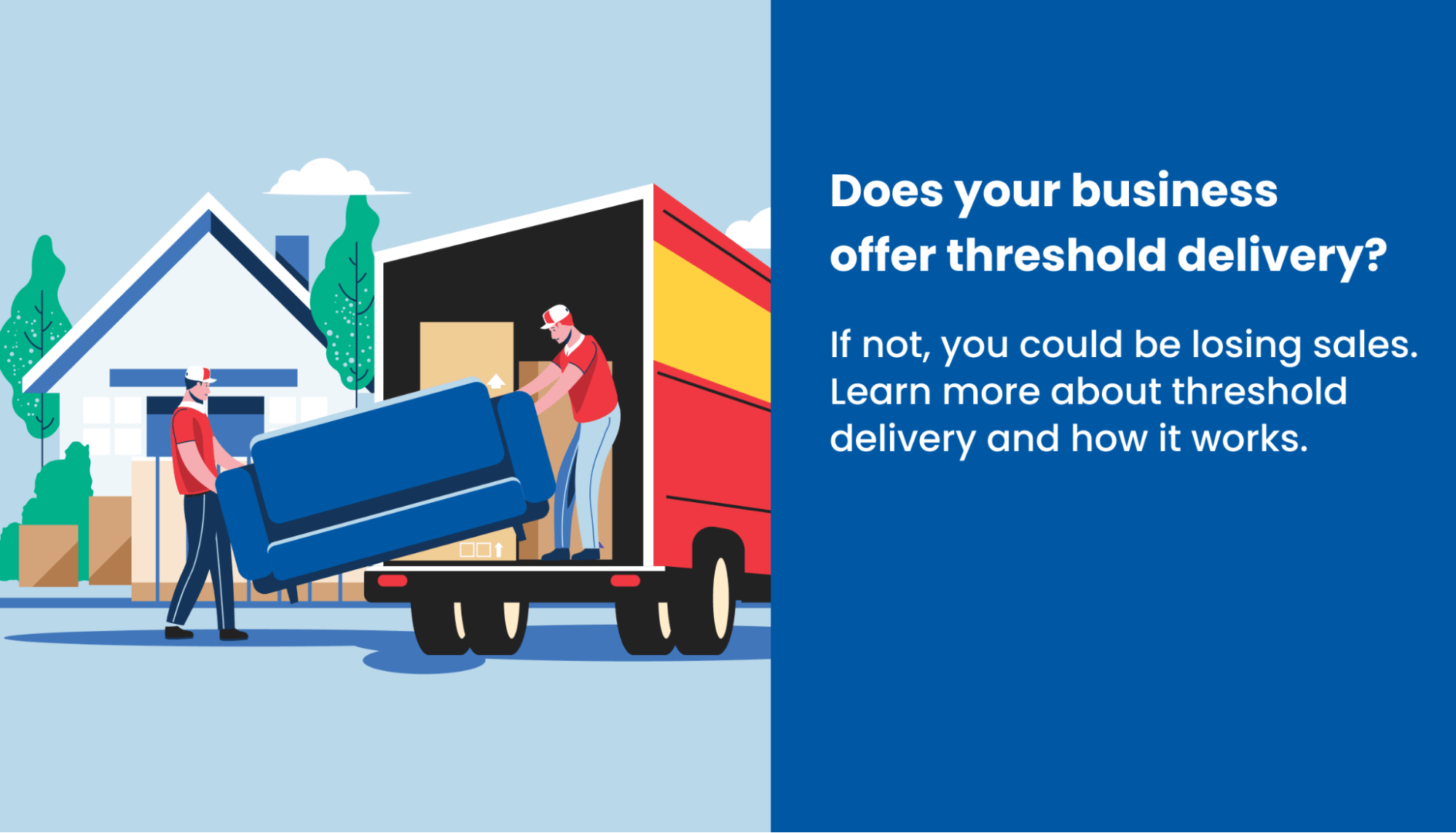
This type of delivery process is used when items are too big for a customer to transport from the store or through standard delivery methods.
The delivery crew is not responsible for taking the item into the house and installing it. Instead, they leave it on the driveway or near the front door.
This is convenient for both the driver (who may need a lift to get the package out of the truck) and the customer (who would have struggled to get the item to their house).
Threshold delivery is a common service offered by most companies selling oversized items since it could be impossible for a customer to transport them independently.
Ultimately, threshold delivery provides an enjoyable delivery experience for the customer. It’s the perfect option for packages too big for customers to handle and creates an extra level of service beyond standard delivery methods.
Plus, unlike other delivery options such as buy online and pick up in store (BOPIS), the customer doesn’t have to do much to get their product. The final mile of the delivery process is the company’s responsibility.
Threshold delivery is a big business driver, too. It’s estimated that the last-mile delivery for oversized items exceeded $5.23 million in revenue in 2021 and is expected to expand at a 9% annual growth rate through 2027.
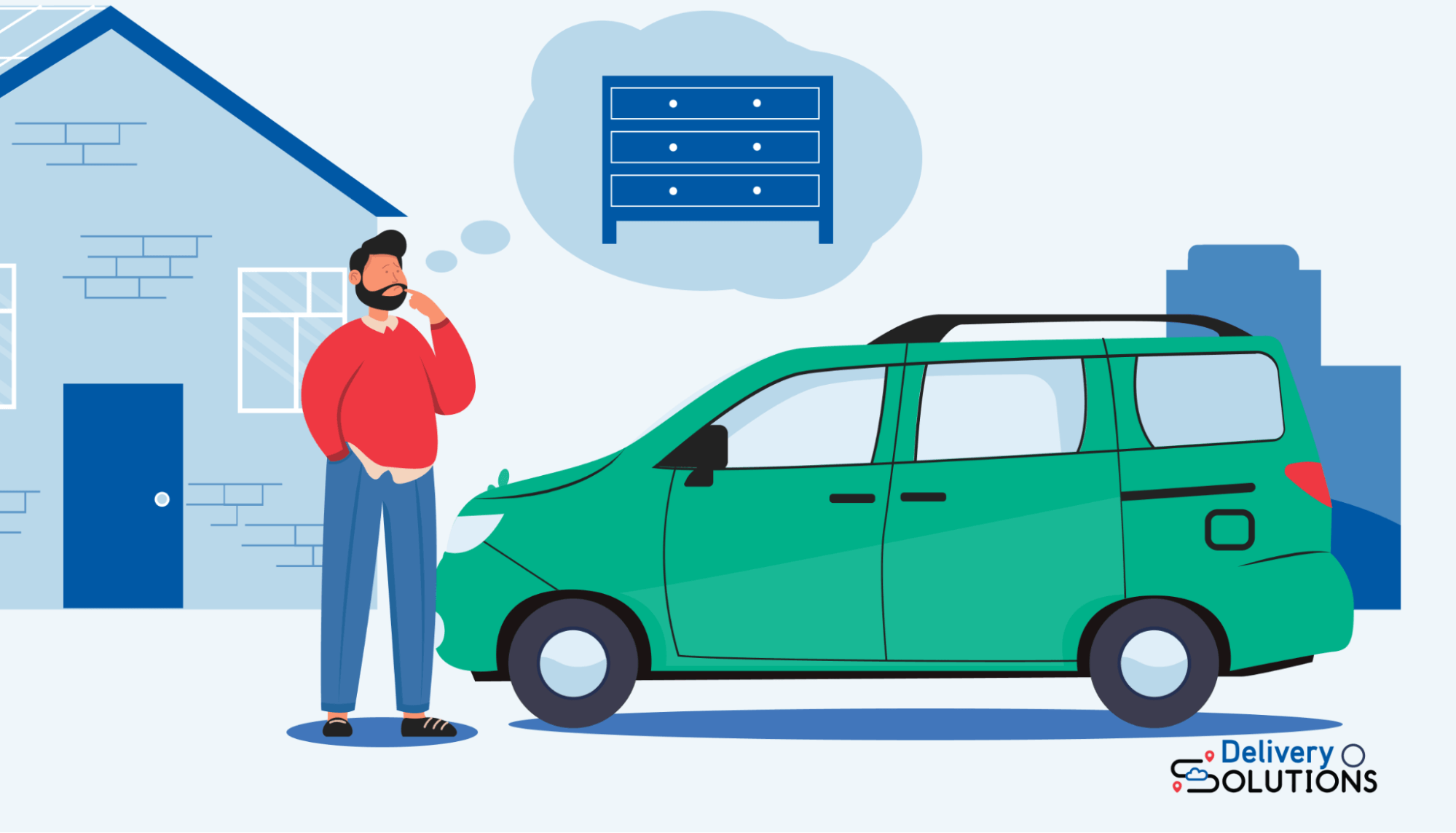
But how does threshold delivery compare to other delivery types like white glove delivery? Let’s find out.
Threshold delivery vs. white glove delivery
There are many different types of delivery methods, including some that are very similar to threshold delivery.
White glove delivery is a delivery type similar to threshold delivery. It provides a parallel delivery service but has a unique offering that distinguishes it.
So how do they both differ?
White glove delivery goes a step beyond threshold delivery and includes installing the item in the customer’s house or apartment. It’s a more premium delivery option that customers love because it doesn’t require the customer to do any work.
Threshold delivery crews will leave the item at the base of the driveway or near the front door, while white glove delivery crews will place the item where it belongs and install it.
White glove delivery is typically used for items like dishwashers, washing machines, and other appliances needing calibration. These items are often more complex for the customer to install on their own.
Other items, including couches and desks, could be delivered through a threshold delivery mechanism since the customer can move them around or put them together on their own without additional assistance.
Should businesses still offer threshold delivery if they offer white glove delivery or another similar delivery type? Let’s take a look.
Why should businesses offer threshold delivery?
Threshold delivery is a popular option that many companies provide for various reasons.
The delivery offering is not only impactful to customers but also to your bottom line too.
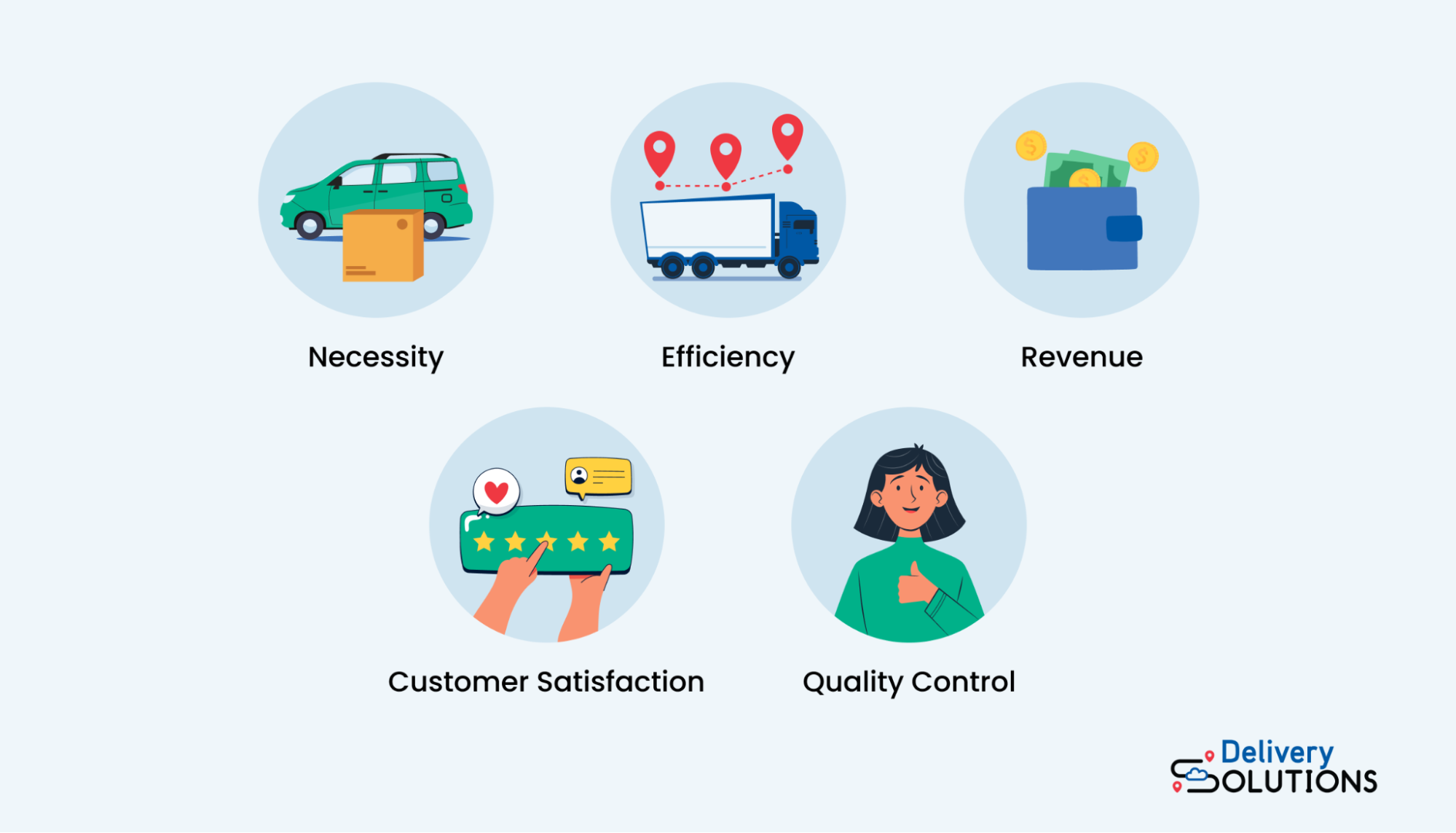
Some of the most common reasons businesses provide threshold delivery are:
- Necessity: Some items are simply too large for a customer to take home on their own.
- Efficiency: Threshold delivery enables businesses to store large items at a warehouse or fulfillment center and dispatch them as orders arrive, leaving the flagship store or storeroom without clutter or excess inventory.
- Revenue: Businesses can charge a higher delivery fee for threshold delivery.
- Customer satisfaction: Threshold delivery is an enhanced service offering that allows the customer to relax and not worry about getting their products home.
- Quality control: For larger items that likely cost more, businesses can ensure that the item gets safely to the customer’s house without damage.
Collectively, all these reasons establish threshold delivery as a worthwhile delivery option that businesses should consider.
However, we should also highlight any potential negative aspects of threshold delivery. The two main cons of threshold delivery are cost and complexity.
Threshold delivery will cost businesses more due to the need for larger trucks and more delivery crews capable of transporting large items. The delivery process is also more complex because it requires more technological infrastructure to optimize crews and efficiency.
Despite these challenges, however, threshold delivery is still a no-brainer option for companies selling larger products.
Sold already? Let’s dissect the individual steps of the threshold delivery process so you can integrate them into your business operations.
How does threshold delivery work
For a customer, the threshold delivery process is seamless. All the work is placed on the company’s delivery team.
However, the magic of threshold delivery (compared to white glove delivery) is how easy it is for the delivery driver, too.
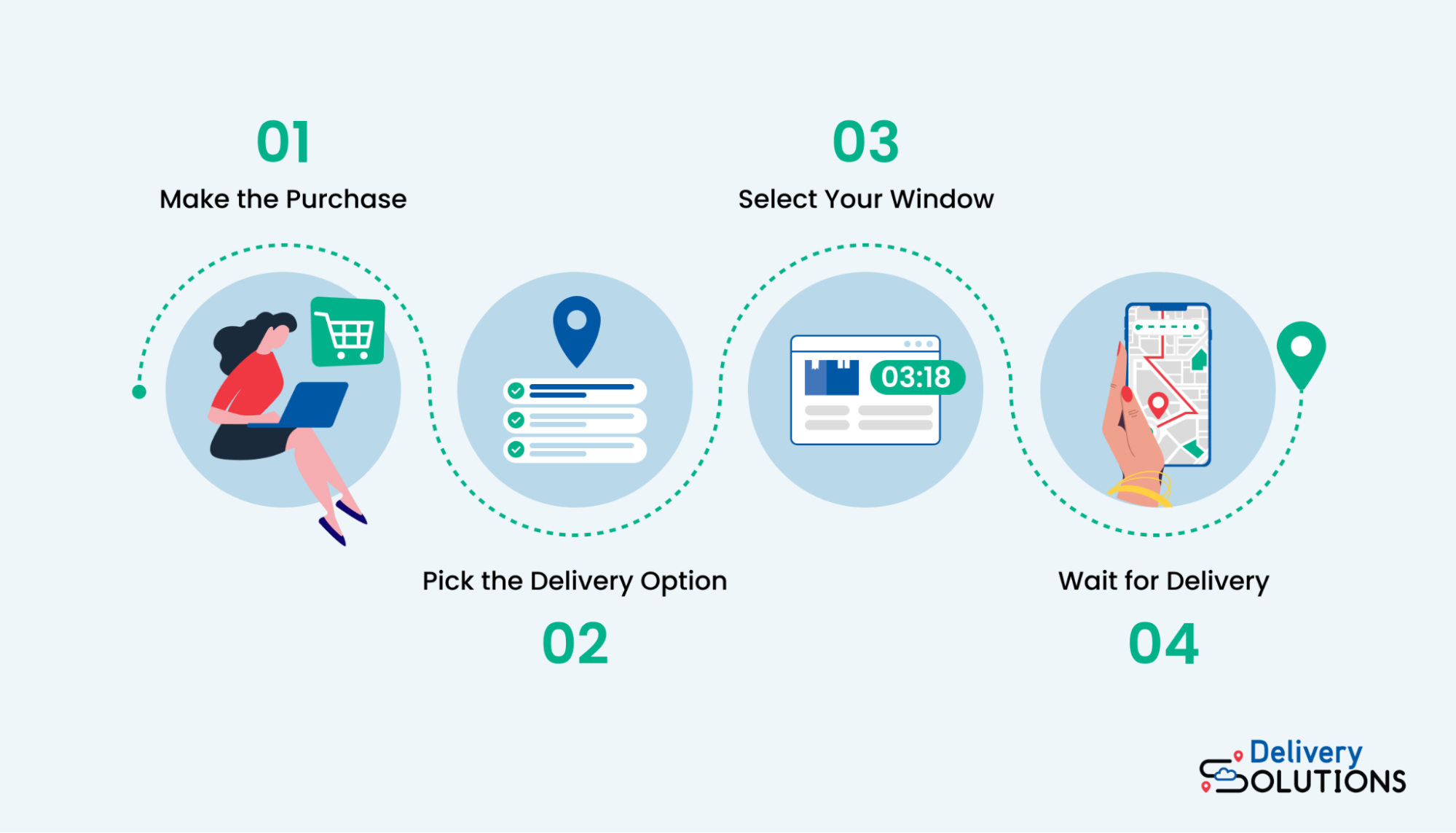
Most threshold delivery operations follow these steps.
1. Make the purchase
A customer purchases an oversized item that qualifies for threshold delivery. This can be done online or in-store. Removing the stress of getting the item home can remove friction from the customers’ purchasing journey, making them more likely to buy.
Often, the store will have cards or a product sheet that the customer can take to the register, so they don’t have to worry about retrieving the product in real time.
2. Pick the delivery option
Next, the customer selects the threshold delivery option. Depending on the business, the customer may have to pay an additional delivery fee.
However, when it is impossible for the customer to transport the item, the business may offer this service for free to accelerate the buying process.
It’s important to note: threshold delivery may not be listed as that at checkout. Phrases like “home delivery” will likely be used on customer-facing interfaces.
3. Select your delivery window
Next, the customer will select a delivery window to designate when they might be home for the delivery. Sometimes, the company assigns a date or time to the customer to optimize inventory and delivery routes.
Companies will send an email alert with a date or appointment time, so the customer knows when the residential delivery may take place.
Customers aren’t often required to be at home when the delivery occurs. However, most like to know when they can anticipate their product’s arrival.
4. Wait for delivery
Now that the customer has done their part, they can wait until the scheduled delivery date and time. The delivery crew will drop the item on dry ground at the customer’s house, completing the process.
That’s it!
The customer doesn’t have to do any heavy lifting to get the product from the store to their house. By offering this service, more customers will feel comfortable purchasing since no effort, and the business’s bottom line will increase.
Master threshold delivery with Delivery Solutions
Deliver Solutions’ many product features can help streamline your entire delivery operation — including threshold delivery.
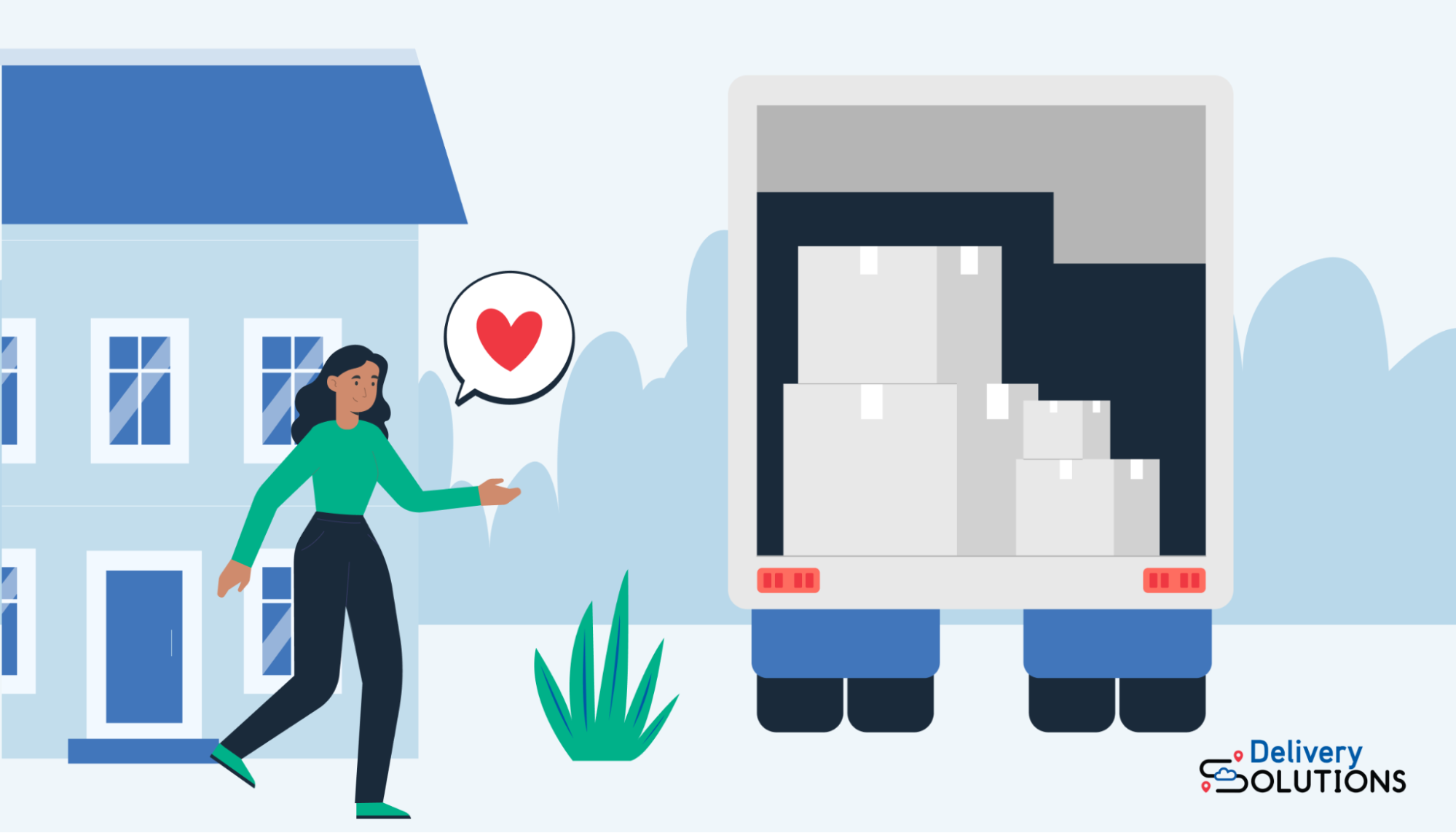
Delivery Solutions’ unified omnichannel platform enhances your threshold delivery operation by providing:
- A streamlined shipping operation that enables businesses to optimize and reduce costs
- Transparency over all parts of the supply chain and shipping providers
- Optimization of warehouses and team members
- Out-of-the-box, easy-to-read dashboards with essential real-time data
All this helps business operators track existing shipments in real time while identifying ways to increase efficiency and reduce costs.
Delivery Solutions’ interface enables business operators to quickly oversee and adjust their delivery process, creating greater flexibility in their complex shipping and delivery operations.
Without an effective product like Delivery Solutions, logistics operators would not have the grasp on their delivery operations as they do now.
Conclusion
Depending on the types of products your business sells, threshold delivery is a valuable service for customers that also offers several business benefits. Although additional logistics will be needed, offering threshold delivery is essential to any business’s omnichannel strategy.
Delivery Solutions enables fulfillment experiences for businesses — especially enterprise retailers — offering flexible options to consumers and priming merchants for innovation at scale.
Elevate your omnichannel delivery strategy with Delivery Solutions’ unique threshold delivery functionality. Reach out today to get started.
Russ Bair
Russ Bair is the Chief Product Officer at Delivery Solutions, the leading provider of last-mile delivery and fulfillment software. He helps ensure retailers achieve their goals and they are able to provide meaningful experiences for their customers. Prior to his tenure at Delivery Solutions, Russ was President of projekt202—an experience-driven consulting firm founded to apply deep ethnographic research to the development of mobile, web, and workplace software. He received his Bachelors in Computer Science from Texas A&M and has more than 25 years of extensive experience in the software development and consulting fields. While holding leadership roles within organizations or various sizes, Russ has designed, developed, and led the creation of complex custom software implementations for small, medium, and Fortune 500 companies across the United States. Russ is fulfilled by helping those around him reach their potential through servant leadership and collaborating to create progress and economic value. He currently lives in the Dallas area with his wife Jana and two children.
Topics from this blog: Delivery Efficiency
